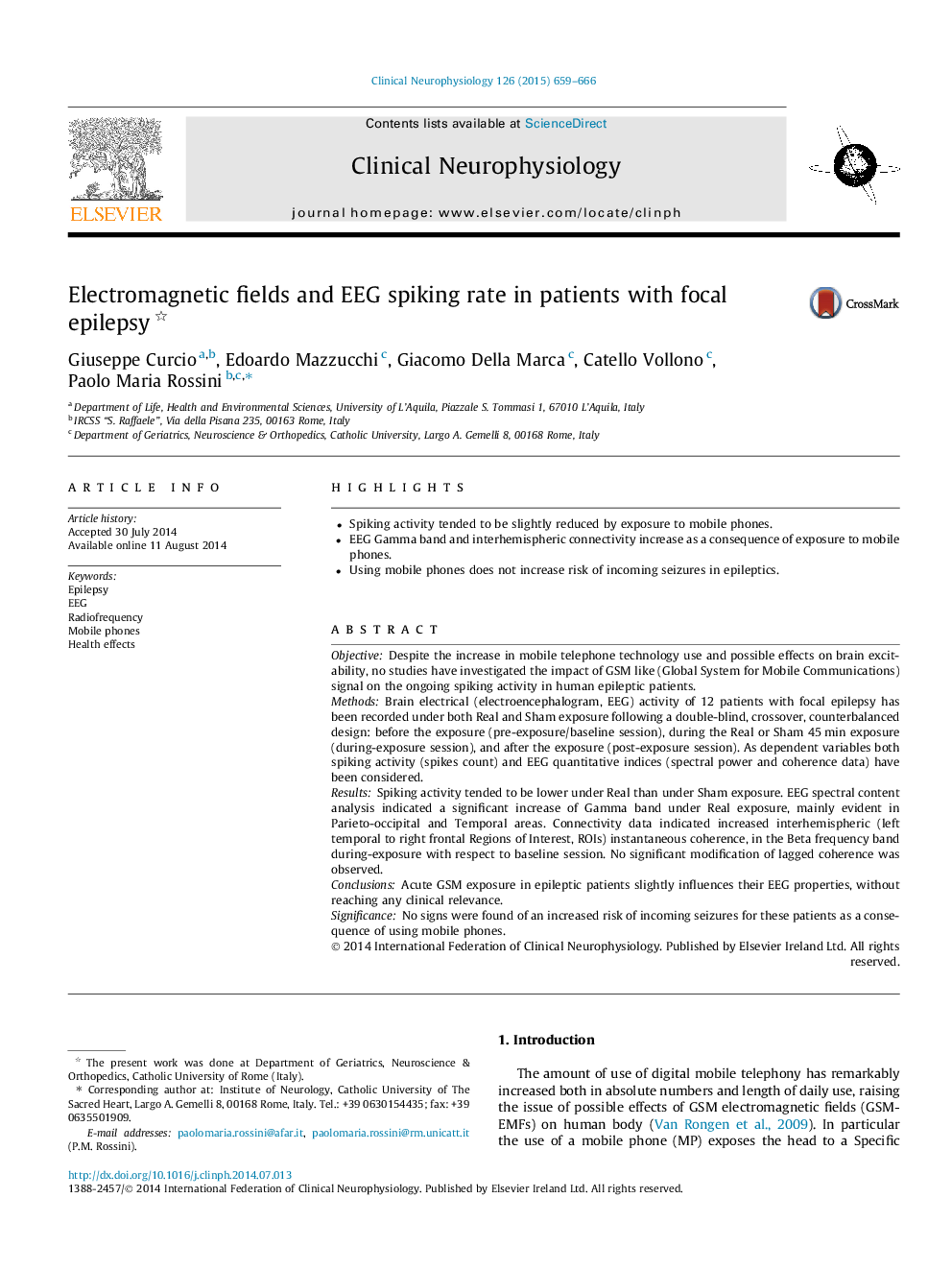| Article ID | Journal | Published Year | Pages | File Type |
|---|---|---|---|---|
| 3042992 | Clinical Neurophysiology | 2015 | 8 Pages |
•Spiking activity tended to be slightly reduced by exposure to mobile phones.•EEG Gamma band and interhemispheric connectivity increase as a consequence of exposure to mobile phones.•Using mobile phones does not increase risk of incoming seizures in epileptics.
ObjectiveDespite the increase in mobile telephone technology use and possible effects on brain excitability, no studies have investigated the impact of GSM like (Global System for Mobile Communications) signal on the ongoing spiking activity in human epileptic patients.MethodsBrain electrical (electroencephalogram, EEG) activity of 12 patients with focal epilepsy has been recorded under both Real and Sham exposure following a double-blind, crossover, counterbalanced design: before the exposure (pre-exposure/baseline session), during the Real or Sham 45 min exposure (during-exposure session), and after the exposure (post-exposure session). As dependent variables both spiking activity (spikes count) and EEG quantitative indices (spectral power and coherence data) have been considered.ResultsSpiking activity tended to be lower under Real than under Sham exposure. EEG spectral content analysis indicated a significant increase of Gamma band under Real exposure, mainly evident in Parieto-occipital and Temporal areas. Connectivity data indicated increased interhemispheric (left temporal to right frontal Regions of Interest, ROIs) instantaneous coherence, in the Beta frequency band during-exposure with respect to baseline session. No significant modification of lagged coherence was observed.ConclusionsAcute GSM exposure in epileptic patients slightly influences their EEG properties, without reaching any clinical relevance.SignificanceNo signs were found of an increased risk of incoming seizures for these patients as a consequence of using mobile phones.
